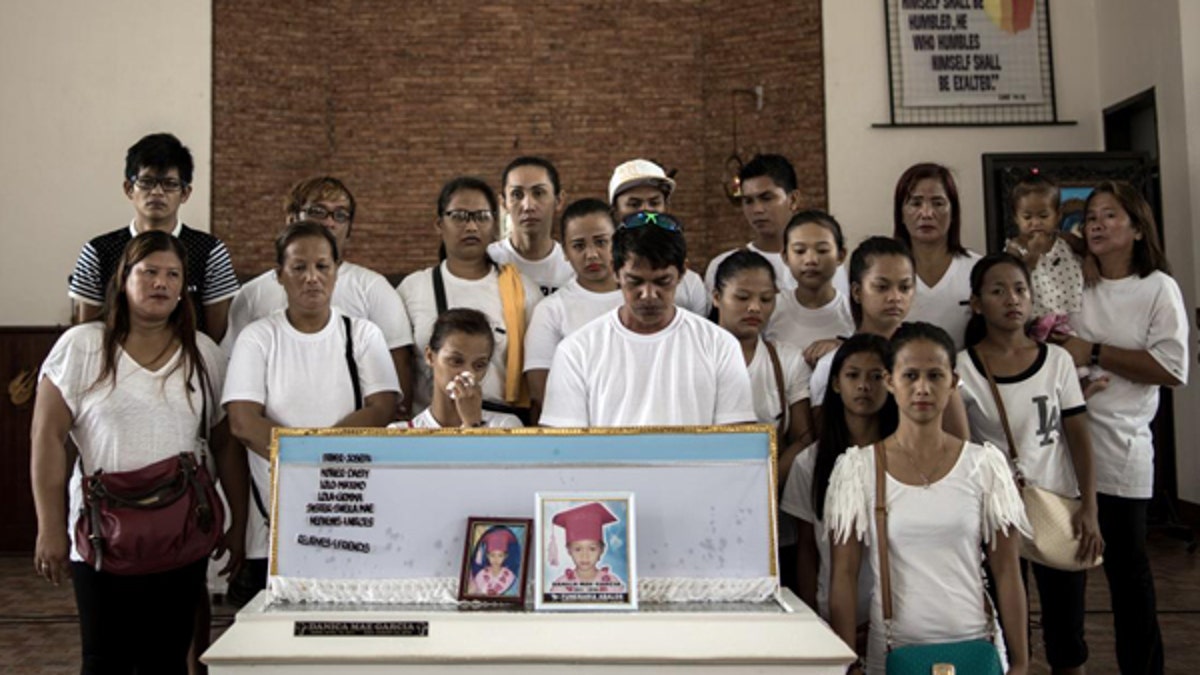
A man's body lies covered with cardboard boxes after he was shot dead by unidentified gunmen in front of a convenience store in Manila last October. (Carlo Gabuco/HUman Rights Watch)
Police in the Philippines faked evidence to justify killing suspects in the drug trade, according to a new report.
President Rodrigo Duterte’s violent campaign against drugs has claimed more than 7,000 lives, according to the report, entitled “‘License to Kill’: Philippine Police Killings in Duterte’s ‘War on Drugs.’” Human Rights Watch, which conducted the study, accused Duterte and other senior officials of being directly behind killings of mostly poor, urban people.
“Our investigations into the Philippine ‘drug war’ found that police routinely kill drug suspects in cold blood and then cover up their crime by planting drugs and guns at the scene,” said Peter Bouckaert, emergencies director at Human Rights Watch and author of the report. “President Duterte’s role in these killings makes him ultimately responsible for the deaths of thousands.”
The 117-page report draws heavily upon interviews in the Manila metropolitan area with family members of victims and witnesses to police-involved killings, as well as journalists and human rights activists. A picture emerges in the report of the Philippine National police repeatedly killings of drug suspects and then falsely claiming self-defense. It’s alleged in the report that they planted guns, spent ammo and packets of drugs on their victims.
“Under the veneer of anti-drug operations, the Philippine police at Duterte’s urging have killed thousands of Filipinos,” Bouckaert said. “Many killings of drug suspects followed the same deadly routine and indicate a pattern of police abuse.”
It’s also alleged that the National Police forces have been working in tandem with masked gunmen -- casting doubt on the government’s claims that the majority of killings have been committed by vigilantes or rival drug gangs.
Some of the more violent incidents, as presented in the report, include:
- Six masked gunmen burst into a Manila home where several teenagers were watching television. The men arrested and beat drug suspects Aljon Mesa and Jimboy Bolasa, and then took them away on motorcycles. A half hour later, after hearing from a uniformed policeman, relatives rushed to a nearby bridge to find the suspects bodies, both with gunshot wounds to the head, their hands were tied with cloth. The gunmen were still at the scene, while uniformed police cordoned off the area.
- Paquito Mejos, a 53-year old father of five in Manila, turned himself in to authorities in October, 2016 after he learned that he was on a “watch list” for methamphetamine use. Two days later a gunman came to his home and asked for Mejos who was napping in a room on the second floor of his home. The gunman walked upstairs and fired two shots, killing Mejos. In the report, the police referred to him as “a suspected drug pusher.”
- Five masked armed men broke into a house in Bulacan province where Oliver Dela Cruz, 43, was playing cards. The men grabbed him and slammed him into a concrete wall several times before bringing him out of the house and executing him.

August 31, 2016: A family picture with the coffin of 5-year-old Danica mae Garcia who was killed in front of her family at their home in Dagupan City. An unidentifed gunman was targeting the young girl's grandfather. (Carlo Gabuco/Hman Rights Watch)
The HRW report documents 24 incidents which led to the deaths of 32 people. Most of the incidents occurred late at night on the street or inside shacks in the urban slums. The assailants would usually bang on doors and barge into rooms without identifying themselves or with a warrant. Locals said they often saw police officials set up a perimeter before the shooting even occurred and investigators and crime scene units would show up almost immediately after the killings.
Since taking office on June 30, 2016, Duterte and other senior officials have been outspoken in support of a nationwide campaign to kill drug dealers and users, while denying or downplaying the illegality of police actions.
“My order is shoot to kill you,” Duterte warned drug dealers in August. “I don’t care about human rights, you better believe me.”




















